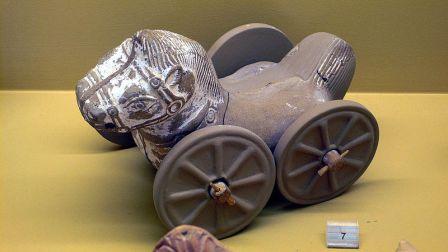The Roman Empire
The Roman Empire
https://youtu.be/OCA9xGT9NTY?list=PLGx64cjguaGy6BNb13zodMcajE8R-9rYJ
The Rise and Fall of an Empire
https://youtu.be/WG_lHq5GHtM?list=PLskL8uu7zHrBXI5LEQIVMCAsq7LKpCgOC
BBC Building the Ancient City Athens and Rome
|
A Typical Day
A typical Roman day would start off with a light breakfast and then off to work. Work would end in the early afternoon when many Romans would take a quick trip to the baths to bathe and socialize. At around 3pm they would have dinner which was as much of a social event as a meal.
Ancient Roman Jobs
Ancient Rome was a complex society that required a number of different job functions and skills to function. Most of the menial tasks were performed by slaves. Here are some of the jobs a Roman citizen might have:
- Farmer - Most of the Romans who lived in the countryside were farmers. The most common crop was wheat which was used to make bread.
- Soldier - The Roman Army was large and needed soldiers. The army was a way for the poorer class to earn a regular wage and to gain some valuable land at the end of their service. It was a good way for the poor to move up in status.
- Merchant - Merchants of all sorts sold and bought items from around the Empire. They kept the economy rolling and the Empire rich.
- Craftsman - From making dishes and pots to crafting fine jewelry and weapons for the army, craftsmen were important to the empire. Some craftsmen worked in individual shops and learned a specific craft, usually from their father. Others were slaves, who worked in large workshops that produced items in large quantities such as dishes or pots.
- Entertainers - The people of Ancient Rome liked to be entertained. Just like today, there were a number of entertainers in Rome including musicians, dancers, actors, chariot racers, and gladiators.
- Lawyers, Teachers, Engineers - The more educated Romans could become lawyers, teachers, and engineers.
- Government - The government of Ancient Rome was huge. There were all sorts of government jobs from tax collectors and clerks to high ranking positions like Senators. The Senators were the wealthy and the powerful. Senators served in their position for life and at times there were as many as 600 members of the Senate.
Family
The family unit was very important to the Romans. The head of the family was the father called the paterfamilias. Legally, he had all the power in the family. However, usually the wife had a strong say in what went on in the family. She often handled the finances and managed the household.
School
Roman children started school at the age of 7. Wealthy children would be taught by a full time tutor. Other children went to public school. They studied subjects such as reading, writing, math, literature, and debate. School was mostly for boys, however some wealthy girls were tutored at home. Poor children did not get to go to school.

Food
Most Romans ate a light breakfast and little food during the day. They would then have a large dinner. Dinner was a major event starting at around three in the afternoon. They would lie on their sides on a couch and be served by the servants. They ate with their hands and would rinse their hands often in water during the meal.
Typical food would have been bread. beans, fish, vegetables, cheese, and dried fruit. They ate little meat. The rich would have had a variety of foods in fancy sauces. How the food looked was just as important as the taste. Some of the food they ate would seem very strange to us, such as mice and peacock tongues.
Clothing
Toga - The toga was a long robe made up of several yards of material. The wealthy wore white togas made from wool or linen. Some colors and markings on togas were reserved for certain people and certain occasions. For example, a toga with a purple border was worn by high ranking senators and consuls, while a black toga was generally only worn during times of mourning. The toga was uncomfortable and hard to wear and was generally only worn in public, not around the house. In later years, the toga grew out of style and most people wore a tunic with a cloak when it was cold.
Tunic - The tunic was more like a long shirt. Tunics were worn by the rich around the house and under their togas. They were the regular dress of the poor.
Take a ten question quiz at the Daily Life in Ancient Rome questions page.
For more about Ancient Rome:
'연구하는 인생 > Histrory' 카테고리의 다른 글
| Holy Roman Empire (0) | 2015.12.07 |
|---|---|
| Why did Constantine move the Capital at the peak of Rome's development? (0) | 2015.12.07 |
| Dark Ages (historiography) (0) | 2015.12.06 |
| Middle Ages (0) | 2015.12.06 |
| Post-classical history (0) | 2015.12.06 |